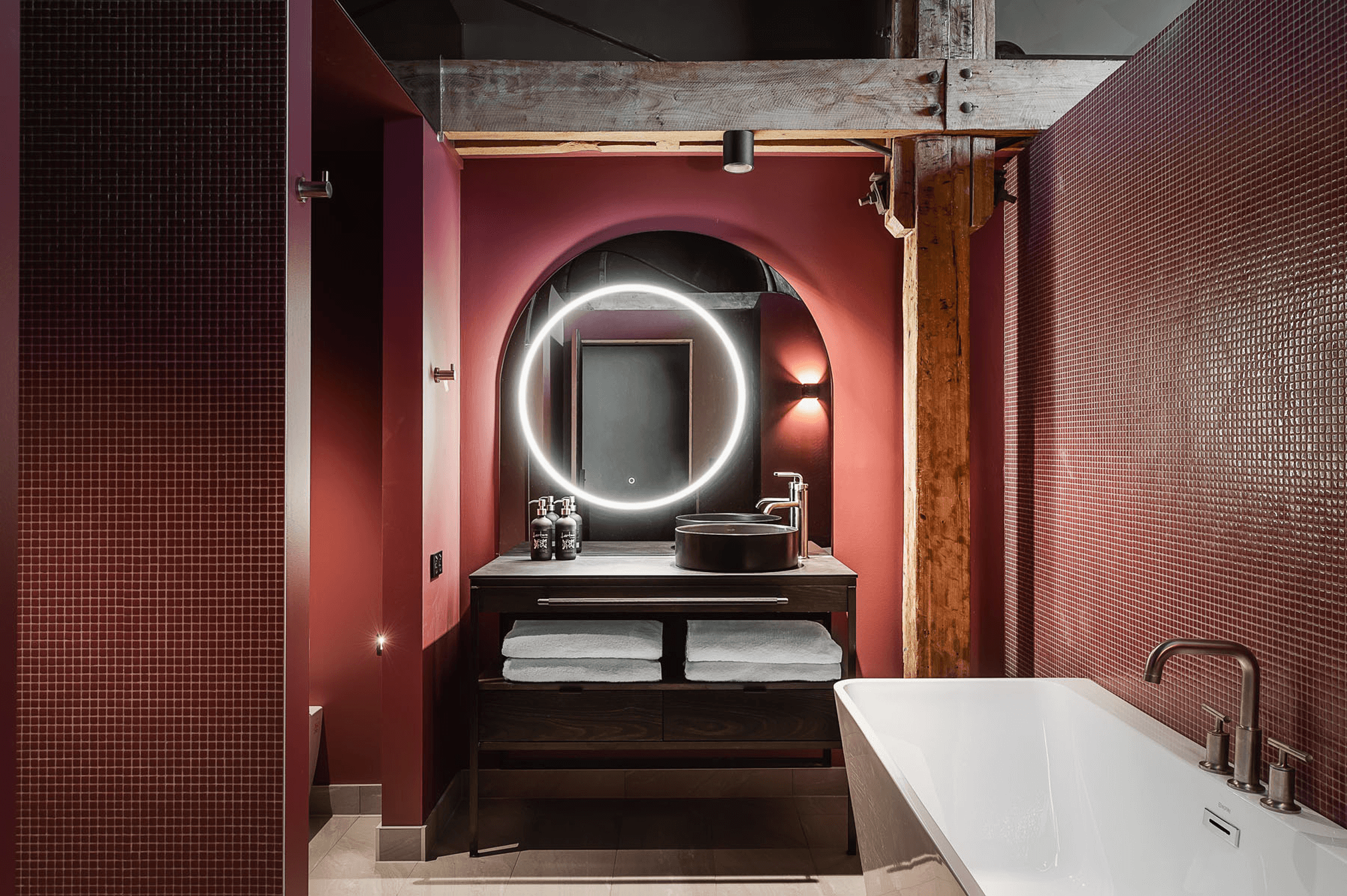A tribute to Tasmania, Cumulus Studio’s Stillwater Seven honours history and place
With offices in Tasmania and interstate, Cumulus is an award–winning architecture studio and the brainchild behind some of Tasmania’s most iconic hospitality destinations including Pumphouse Point, Willie Smith’s and Devils Corner. With dozens of awards under their belts for these eye–catching projects that evoke an emotive response from their inhabitants and passersby, Cumulus studio continues to break the mold with their designs produced in a collaborative effort from their timber loving team. Two of the studio’s founders, Peter Walker and Todd Henderson share their insights behind one of their latest completed projects, Stillwater Seven, a project that celebrates place, telling a story through materials.
With one of their studios located in Launceston, Cumulus Studio had a strong concept and understanding of place when they were commissioned to undertake restoring their latest hospitality hot–spot in Tasmania’s north, Stillwater Seven.

-683x1024.png)
200–year–old timber incorporated into new design
One of the oldest buildings in Launceston, the site was a former flour mill holding nearly two centuries of Tasmania’s history. While multiple businesses had called the building home since its origins as a flour mill, Cumulus Studio rebirthed the original building to meet this century’s demands while incorporating many of the site’s original elements, including its stunning use of Tasmania’s timber species. With a restaurant on the bottom floor and the two floors above reserved for the hotel, Henderson explains they wanted to keep as much of the old building as they could.
“We kept the original timber to bring warmth and to tie you to the location and the culture of the building. The top of the building had fallen victim to a fire over the years and we retained lots of the charred timber elements to connect with the building’s history,” explains Henderson.

Incorporating the burned building into the new plans was a key part of the design as a metaphor for the regeneration that takes place after a bushfire that is common to Tasmania’s bush. This celebration of Tasmania was an important part of the brief from the proud Tasmanian owners of the venue and continued throughout the design.
“We worked with Tasmanian furniture maker Simon Ancher to develop one of a kind pieces for each room that read as their own story, all made out of Tasmanian timber. Everything down to the mattresses were made in Tasmania,” says Henderson.
With pops of colour and playful lighting, new uses of Tasmanian timber species tied in with the old, being used not only for the furniture but also in the joinery, framing and veneer to create a true celebration of the state.